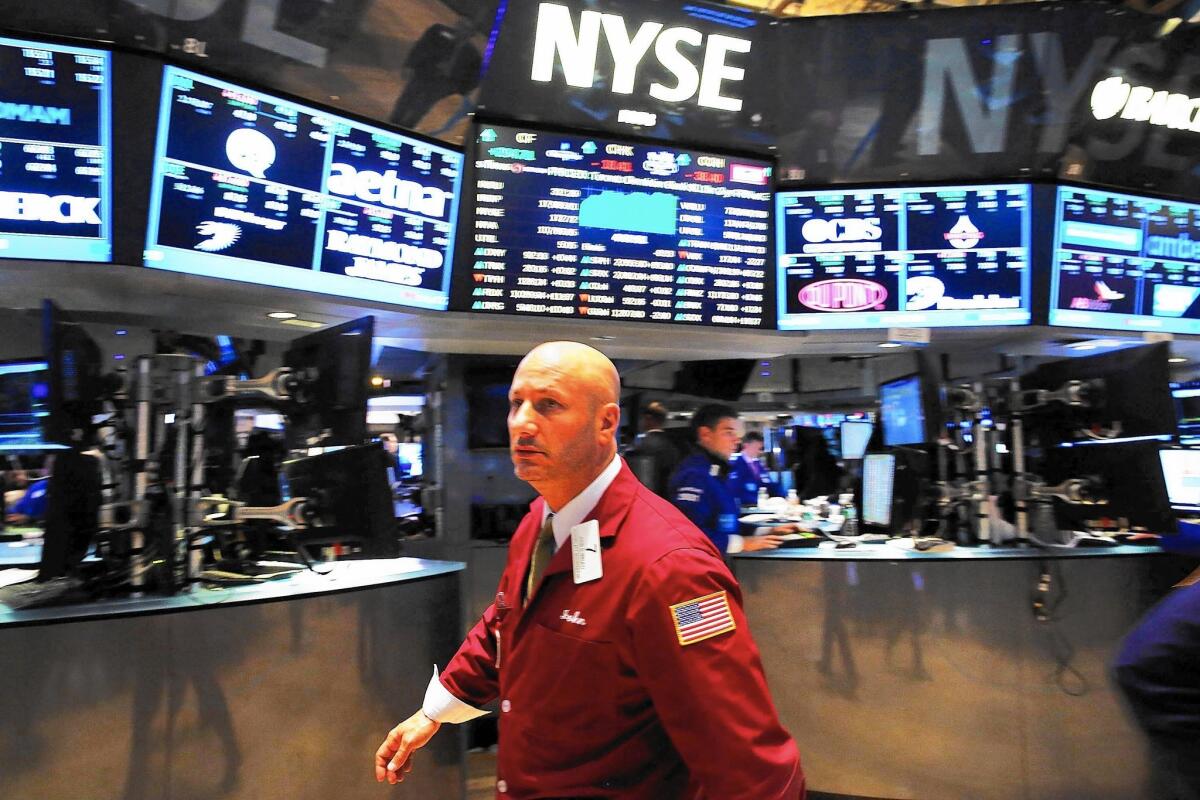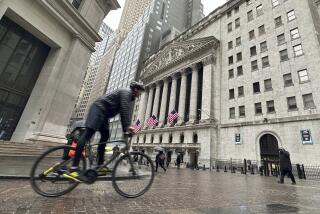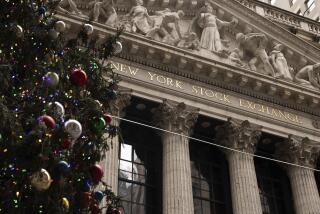Stock volatility could be the norm for 2015

This week’s wild ride on the stock markets brought this word of advice from analysts: Get used to it.
Friday’s 170-point slide in the Dow Jones industrial average seemed almost moderate compared with other triple-digit gains and losses this week, but together, the seesaw closes contribute to a sense that financial markets are getting increasingly skittish — even as the economy improves.
The volatility goes hand in hand with lower interest rates, said Bob Johnson, director of economic analysis for Morningstar Inc., the Chicago mutual fund research firm.
------------
FOR THE RECORD:
Stock markets: An article in the Jan. 10 Business section about stock markets defined a market pullback as a decline of more than 10% and a correction as a drop of 20%. A pullback is less than 10% and a correction is 10% or more. A drop of 20% or more indicates that stock values have entered what’s known as a bear market. —
------------
Investors searching for alternatives to the historically low returns offered by risk-free U.S. Treasury bills, he said, are forced into riskier investments such as stocks, making them, in turn, more volatile.
“One of the consequences of having these low rates is that it forces people to take risks, and periodically, they tend to panic,” he said.
The Dow fell 170.50 on Friday, or nearly 1%, to 17,737.37, while the broader Standard & Poor’s 500 index fell 17.33, or 0.9%, to 2044.81, a downdraft taking both indexes into negative territory for the new year.
The dour mood on Wall Street came in the face of a strong jobs report from the Labor Department, which saw nonfarm payrolls climb a seasonally adjusted 252,000 in December, capping the strongest year of job growth in 15 years. Meanwhile, the unemployment rate in December fell to 5.6%.
The brightening outlook on jobs, though, was tempered by a relatively stagnant one on wages, which rose only 1.7% on the year, not much above the 1.3% inflation rate.
“The warning is the growth of employment income should remain quite modest, especially for an economic recovery that will celebrate its sixth year come this June,” said John Lonski, chief capital market economist for Moody’s Analytics.
European markets also fell, with London’s FTSE down more than 1% and Germany’s DAX and France’s CAC 40 off nearly 2%.
The day’s slump is leading analysts to see 2015 as the year of increasing volatility. Markets, they said, will have to contend with a long list of risks, including the threat of deflation in the Eurozone, a slowdown in the Chinese economy and the Federal Reserve’s expected hike in its benchmark interest rates.
Another wild card recently has been the fast-falling price of oil, which has plummeted more than half since July. Though the price has seemed to stabilize in recent days, the huge drop has unnerved markets because of the effect on the U.S. energy sector and the possibility that it is a harbinger of a global slowdown.
Johnson said previous large price declines in oil preceded or accompanied big stock sell-offs in 1987 and 1998.
The VIX, or volatility index often called the “fear index,” jumped 3% on Friday and has quietly risen 17% over the last three months, according to FactSet Research Systems Inc.
In its annual outlook for markets, released Friday, Goldman Sachs’ private wealth investment strategy group included an upbeat assessment of U.S. economic prospects but said that increased volatility will likely accompany any gains, largely because stocks already are trading at historically high prices relative to their earnings.
The report said that since World War II, stocks have been more expensive only 10% of the time and that during those periods of high prices, higher volatility has been the norm.
While returns have averaged a pedestrian 5% at these levels, the gains have been higher and the lows lower than at more moderate price levels. Goldman put the probability of a market pullback (a drop of more than 10%) at 62% and a correction (a 20% decline) at 26%.
“We recommend that clients be prepared for downdrafts,” the report said.
Another reason to expect more volatility: Last year was rather placid. The S&P 500 rose or fell more than 1% on 38 days during the year, said Sam Stovall, U.S. equity strategist for S&P Capital IQ.
The average number of 1% swings since 2000 was 80 a year, he said, even though the period included the dot-com bust and the Great Recession. But even going further back to 1960, the average was 60 a year.
If investors are hoping that a smooth-sailing U.S. economy will mean a smooth ride in the markets, analysts said, the odds are decidedly against it.







